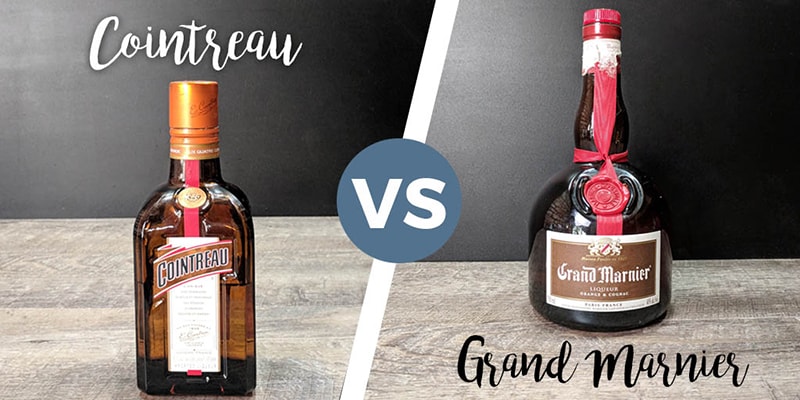A good bar should never find itself lacking in orange liqueur. Orange liqueurs are an often ignored but essential ingredient of iconic drinks such as Long Island Ice Teas and Margaritas. Their fruity tang, sweet undertones, and complex flavor give any cocktail a fruity boost. The two most popular brands of orange liqueur are Cointreau and Grand Marnier.
Cointreau is said to be the sweeter and lighter of the two, while Grand Marnier offers a deeper and more complex orange flavor. Below, we’ll be having an in-depth look at their characteristics.
What Is Curaçao and Triple Sec?
These two terms are often what you will hear when dealing with orange liqueurs. Curaçao, as far as experts are concerned, was the word settlers used to define Dutch liqueurs that used laraha orange peels as a base. This was bitterer than the Seville oranges local to the area at the time in Curaçao. Over time, the term “curaçao” became generalized to mean any orange liqueur that utilized bitter oranges, regardless of whether the oranges came from the original island of Curaçao.
Triple sec, translated from French, literally means “triple dry.”, but simply refers to the low sugar content of the orange peels used in its creation. Some say it may also refer to the fact that it is distilled three times. Others believe it’s because three different oranges are used in its creation.
Grand Marnier is a “triple sec” liqueur. In truth, there are no longer any hard differences between triple sec and curaçao. Either are legally defined as orange liqueurs, and the only real difference acknowledged by experts is that curaçao may (or may not) come from the original island of Curaçao. (Source)
Cointreau
This curaçao style liqueur starts as a sugar beet-based alcohol with an ABV (Alcohol by Volume) rating of 96%. Afterwards, this alcohol is mixed bittersweet oranges from around the globe. In particular: Spain, Africa and Brazil are the countries its oranges hail from. They claim their orange liqueur contains high amounts of essential oils, while keeping added sugars to a minimum (Source).
The final product yields an ABV of 40% (80 proof), and is colorless. It has a smooth orange flavor, with a crisp undertone that refreshes the palate. Cointreau is not an aged liqueur, due to using only alcohol and fruit extract with no aging required to appreciate the taste.
Grand Marnier
Grand Marnier is an orange flavored brandy made with bitter oranges and hard cognac. Thanks to the use of cognac, Grand Marnier is often aged for the best flavor. (Source) It is said to be a hybrid of triple sec and Curaçao liqueur. It utilizes a unique combination of Cognac, sugar, and distilled essence of bitter orange.
Similar to its sister liqueur, Cointreau, it measures out at 40% ABV. It has deep and woody notes, with a bittersweet orange tang. It can be enjoyed neat or in mixed cocktails.
Cointreau Flavor Profile
- Taste: Pure Orange Essence, Sharp and Sweet
- Feel: Light on the mouth, clean
- Scent: A mild fragrance of fresh orange
- Carb Content (per ounce): 4
Grand Marnier Flavor Profile
- Taste: Bittersweet Orange Oil, with hints of oak and vanilla extract
- Feel: Heavy mouthfeel, rich
- Scent: A hit of orange peel vanilla, complemented by the earthy tones of oak
- Carb Content: 5
Conclusion
Cointreau and Grand Marnier are compatible with all orange liqueur cocktails, but they do provide different flavor profiles. Despite the heavier tones mixed with some woody notes, Grand Marnier actually has a sweeter orange taste than Contreau. Contreau, on the other hand, has a purely straightforward and light orange taste. Whatever you use is entirely up to you. Simply note the differences in flavor profiles to decide what’s best for your palate.

